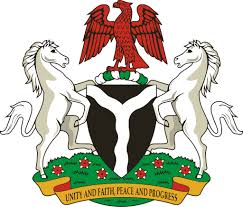Now that the rains are here

Any one knows that rainfall is a natural phenomenon that is influenced by the movements of the heavenly bodies. Moreover, its intensity varies from one region of the world to another. In the tropics, intensity of the rains is usually felt from March until September. Therefore, all countries within the tropics, including Nigeria normally witness very heavy rainfall in this period. Meteorologists have noted that the highest rainfall occurs near the equator, where the strong heating by the Sun creates significant vertical uplift of air, and the formation of prolonged heavy showers and frequent thunderstorms. Annual rainfall recorded in the tropics usually exceed 100 inches and can be as high as 400 inches, particularly if influenced by the monsoons. In Nigeria, the effects of heavy rainfall are usually destructive bringing along with it flooding, destruction of properties, erosion and even water borne diseases. Early this year, the Nigeria Metrological Agency (NIMET) made a forecast of heavy rainfall, even as it advised Nigerians to brace for adverse weather conditions such as flooding, and disease like cholera.
The forecast came against the backdrop of predictions by the World Health Organisation (WHO) that rainfall patterns will be unusually heavy and lead to serious flooding and major outbreaks of malaria. Given the phenomenal changes in the climate, more destructive torrential rains could wreak havoc on lives and property especially when no preparations are in place to stem disasters from these possibilities.
We are aware that burst pipelines, building collapse, flash floods, and other things due to human error been the worst this country has been afflicted with. Even at those, Nigeria’s emergency services often prove incompetent as their state of unpreparedness is exposed. The continuous ravaging flood has put many Nigerians into untold hardship which those in the coastal communities are grossly affected while the relief materials provided by some of the affected state governors are not adequately enough to cater for the people.
The problem with this mordant and corrosive flood disaster is that Nigerian leaders do not know how to contain impending disaster if it occurs, which has resulted in the loss of many lives and property. The National Emergency Management Agency (NEMA) and some of the state ones are usually overstretched while the absence of surface drains and blockage of existing drains with municipal waste, refuse and eroded soil sediments are the major cause of flooding.
The menace of this incessant flood indicates the natural disaster, which cannot be controlled by any government. The seeming lack of expertise to control flooding in many communities has created untold poverty among the inhabitants. That Nigeria lacks experience in managing natural disasters goes without saying since the country has been so fortunate not to have experienced such devastated phenomena such as hurricanes, typhoons, tornadoes, earthquakes and forest fires as some other countries do.
This fortune has, bred a certain complacency, which accounts for poor management of even the slightest discomfort occasioned by nature. We are therefore emphasising on the need to embark on flood prevention and mitigation measures that would ensure free flowing of drainage systems, operation and maintenance of hydraulic structures such as dams and reservoirs. However, it is more important to embark on public enlightenment especially at the community level to sensitise the people in preparation for flood and its aftermath








